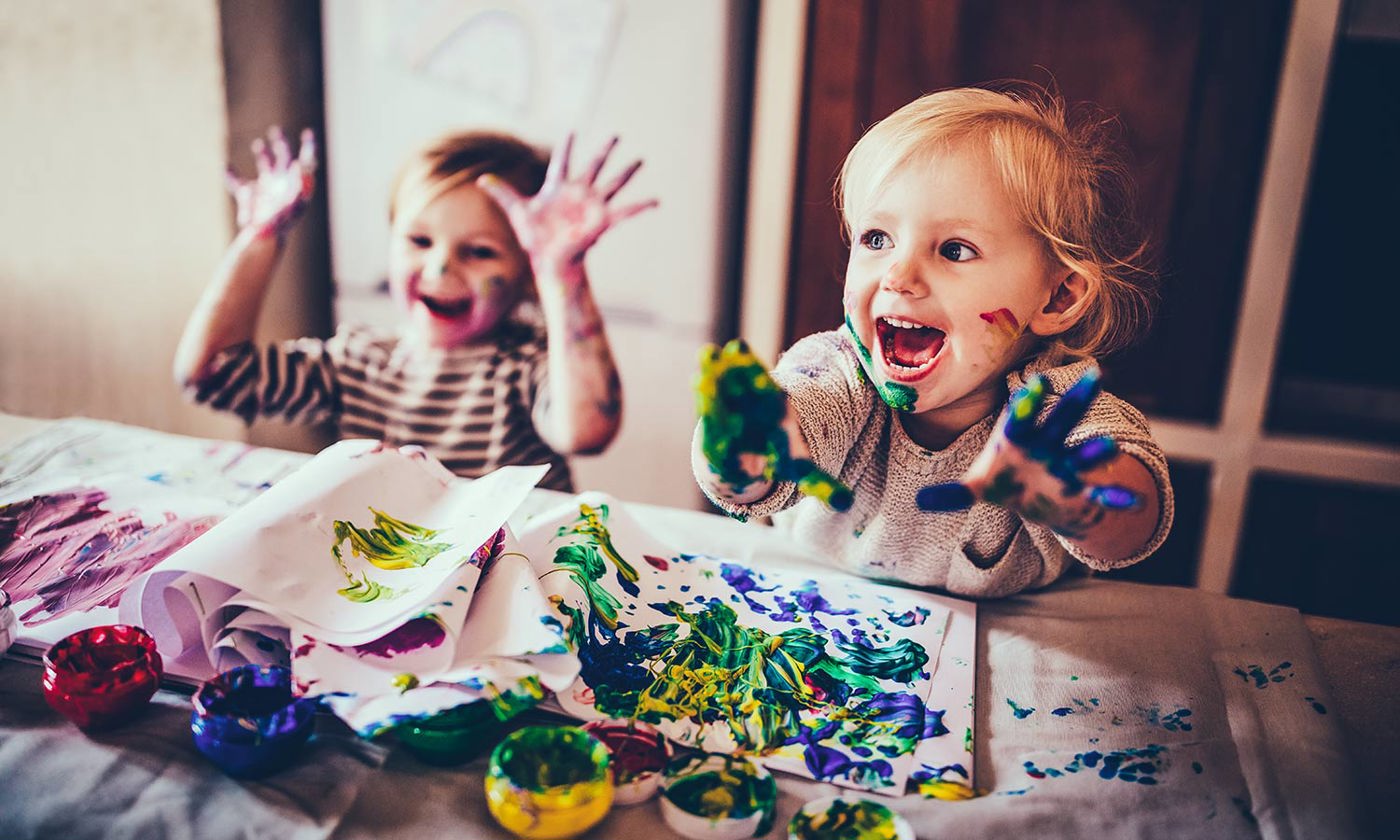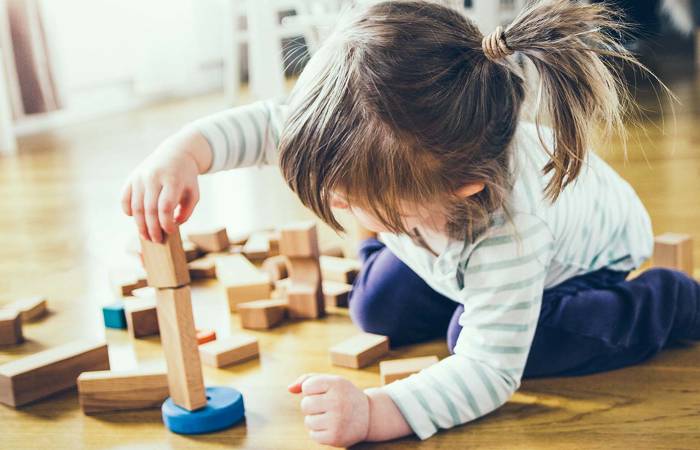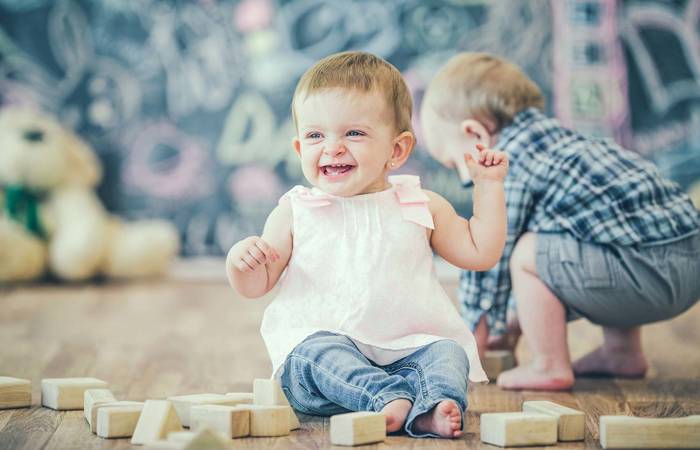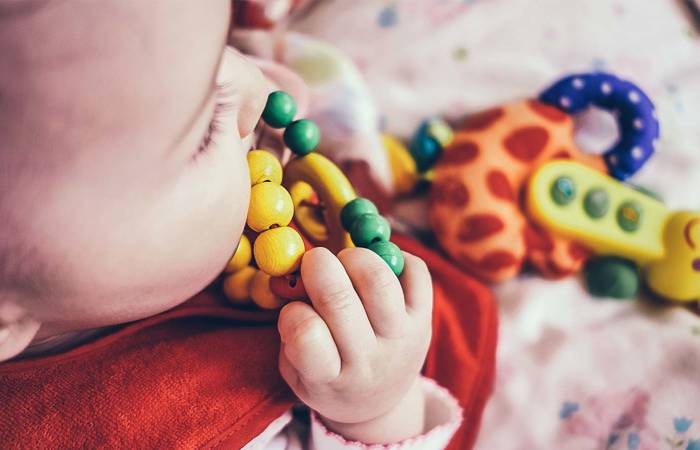Like what you see?
Sign up to receive more free parenting advice.
Thank you for subscribing to our newsletter!
Early Learning

Credit: iStock.com/wundervisuals
Would it surprise you to learn that encouraging your child’s imagination and creative thinking is likely to have a greater impact on their future learning than knowing letters and shapes before school? It is also great fun.
Young children tend to be curious, have great imagination and enormous creative capacity. These are valuable qualities that support learning in school and throughout life, and should be nurtured from an early age.
Over the past decade, there seems to be increased pressure for children to build formal literacy and mathematical knowledge at an earlier stage, for example, to learn letters and sounds, colours and shapes, facts and figures.
A friend told me that she attended an interview with her son’s Prep teacher and was gifted a laminated alphabet sheet to support learning at home over the Christmas holidays.
Similarly, some centres are using letter and sound programs designed for use in school with children as young as three years. While the intent is to support learning and successful transition to school, evidence suggests that a narrow focus on teaching such skills too early is not the best approach.
When play taps into the imagination of other children and adults, the possibilities for exploration and learning are endless.Dr Susan Irvine
Why is imagination important in child development?
Imagination supports learning and the acquisition of knowledge. It does this in two ways. Children draw on their imagination in play to revisit prior knowledge and experience (e.g. a day at the beach, visiting a relative in hospital). This, in turn, expands their knowledge and understanding of these experiences. However, it is not simply about learning what is already known.
Importantly, children use their imagination to explore new knowledge and ideas, for example, revisiting the day at the beach could lead to imagining life underwater. When play taps into the imagination of other children and adults, the possibilities for exploration and learning are endless.
The connection between children’s imagination, knowledge and learning has been known for some time. Celebrated Russian psychologist, Lev Vygotsky, has had a significant influence on early childhood education in Australia and around the world.
Vygotsky was particularly interested in imagination and creativity in learning. He distinguished between two types of brain activity: the ability to store and reproduce existing knowledge; and the ability to draw together existing knowledge and experience to create new ideas and possibilities.
While recognising both support learning, he maintained that building children’s imagination, creative thinking and ability to generate new knowledge and ideas was critical in modern society.
Imagination and creative thinking in the curriculum
Drawing on the work of Vygotsky and others, the Australian Early Years Learning Framework requires educators to work with children and families to support the development of lifelong learning dispositions such as curiosity, creativity and imagination.
Supporting imaginative play and other creative experiences are recognised as providing opportunity for children to:
- explore new ideas
- practise problem-solving
- plan and test ideas and solutions
- learn through trial and error
- take calculated risks; and
- learn to accept failure and try again.
Building on the Early Years Learning Framework, the Australian School Curriculum includes a focus on teaching children to be creative thinkers. This is defined as follows:
“Creative thinking involves students learning to generate and apply new ideas in specific contexts, seeing existing situations in a new way, identifying alternative explanations, and seeing or making new links that generate a positive outcome.” (Australian Curriculum, 2019)
Vygotsky would be pleased. In early education and school, there is currently a strong focus on encouraging children’s imagination and building their ability to think flexibly and creatively, to innovate and solve problems.
From a very early age, most children have great imaginative power and creative ability. However, like all areas of learning and development, these are enriched through practise and experience. Some children may need a little more help to develop their creative thinking skills.
What is most important in the early years: Knowledge or imagination and creative thinking?
Albert Einstein is often quoted as saying “Imagination is more important than knowledge”. His rationale was that knowledge is limited to what we currently know and understand. In contrast, imagination enables us to explore and create new knowledge and understanding.
As an educator, I don’t believe it is ‘either or’. We want children to learn things that we feel are important to know. The knowledge that we think is important is identified in the Early Years Learning Framework and Australian School Curriculum. However, recognising that knowledge isn’t fixed, we also need children to be flexible, imaginative and creative thinkers.
Best of all, imagination provides a foundation for both. Encouraging your child to use their imagination supports their acquisition of knowledge and capacity for creative thinking, and will equip them for success in school and life.
Ways to build your child’s imagination at home
Here are some ways you can assist your child to tap into their imagination and support them to be creative thinkers.
- Help your child to activate their imagination. Show your child that you value their imagination. Encourage them to use their imagination in play and talk with them about their thinking and ideas. If your child is younger, you might describe what you see and respond to their play (e.g. “Oh, you have made a mobile phone. Perhaps you are calling me. ‘Hello’.”).
- Ask thoughtful questions. This is about your child’s imagination, so let them lead thinking and play. However, asking thoughtful questions, now and then, can support creative thinking. Australian educator, Sandy Houen promotes the use of “I wonder” questions that allow children to share their knowledge and ideas. For example, “I wonder what you are going to use to build the rocket”?, “I wonder what would happen if….?”. Be careful not to get carried away with the questions though. Creative thinkers need time to work things out for themselves.
- Make time for imaginative thinking and play. Family life can get busy. Make sure that your child has plenty of free and unstructured time to think, explore and pursue their interests and ideas. There is evidence that playing outdoors and in nature stimulates imagination and learning. So too, some quiet time alone can help children to plan and work through an idea.
- Encourage different experiences. Read and tell imaginative stories, listen to a wide range of music, visit the museum, art gallery or botanical gardens. There are lots of no and low-cost ways that you can stimulate your child’s imagination and creative thinking.
- Show your playful side and imagination. As adults, we can become focused on what needs to be done at home or work. We can also be a bit self-conscious and find it hard to really get into imaginative play. However, showing your curiosity, imagination and creative thinking will encourage your child to do the same.

Dr Susan Irvine
QUT Associate Professor in the School of Early Childhood and Inclusive Education
See more






